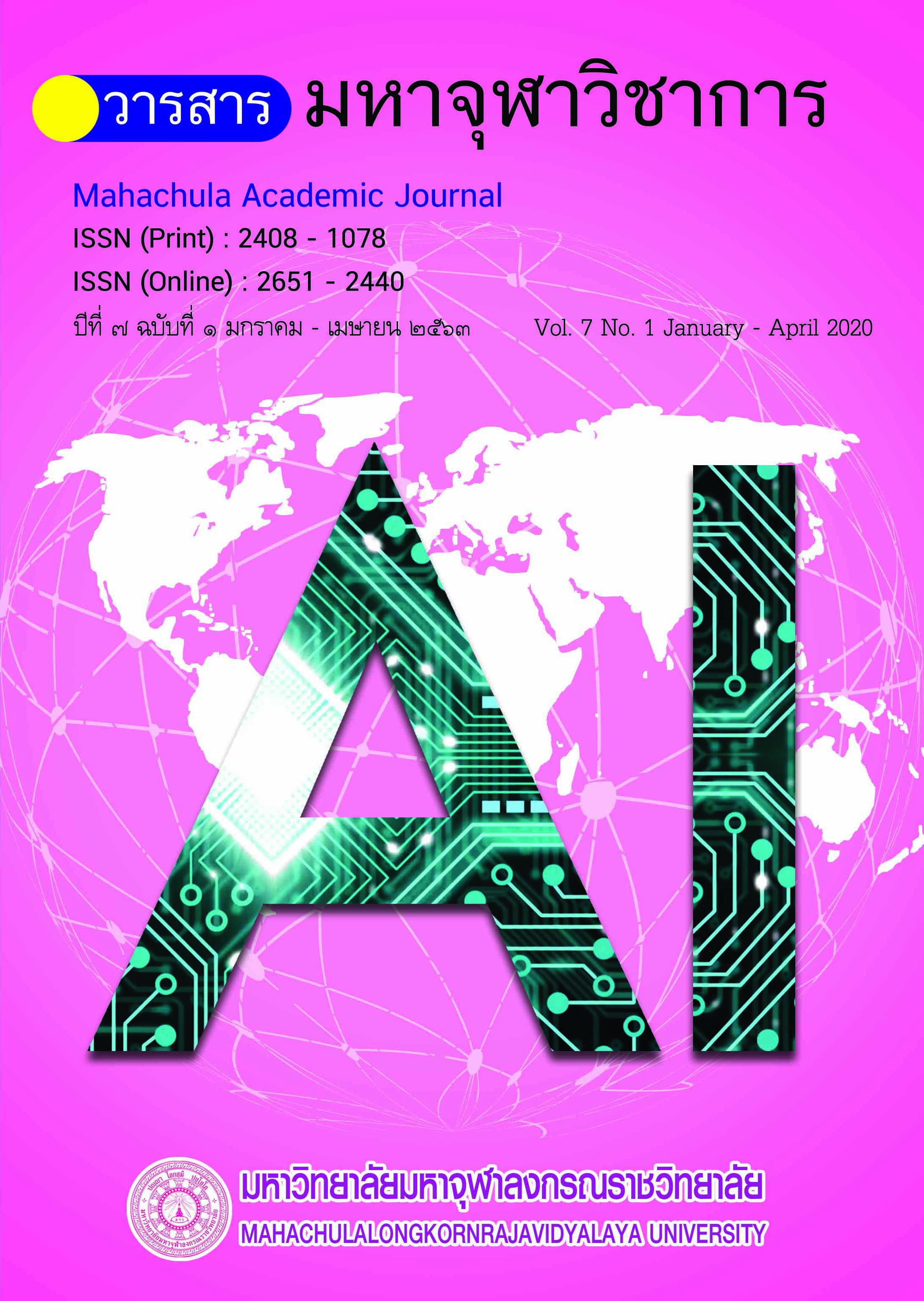How to Think and Write for Philosophical Reasons?
Main Article Content
Abstract
This article is intended to describe the term "analysis" under the terms ‘reasoning’ and ‘arguing’ and then summarizes the analyzed content by synthesis. ‘Reasoning’ refers to the references of ideas, theories or principles for the reasonability of criticizing writings, in other words called ‘reasonable critique’. ‘Arguing’ refers to argument or proofs with references to documents, books, texts, and research to support both agree and disagree issues, then synthesized; this means knitting, fusing, compiling, and composing the idea homogeneously through the expression and language of the author or researcher. And this article is analysed on Atta⁓ (Self) in Buddhist saying and Anatta philosophy were case studies, after studying, it made one to know that self teaching in Buddhist saying and Anatta⁓ philosophy were the similarly method as teaching from ‘having’ to ‘non-having’ or from ‘thing to nothing’. The first step starts studying ‘having or thing’, because of ‘non-having or nothing’ is the oppositional meaning with ‘having or thing’.
Article Details
References
กรมศิลปากร. ปัญหาพระยามิลินท์. กรุงเทพมหานคร: โรงพิมพ์เจริญธรรม, ๒๔๘๓.
เกรียงศักดิ์ เจริญวงศ์ศักดิ์. ลายแทงนักคิด. กรุงเทพมหานคร: บริษัท ซักเซสมีเดีย จำกัด, ๒๕๔๖.
กรมศิลปากร. การคิดเชิงสังเคราะห์. กรุงเทพมหานคร: บริษัท ซักเซสมีเดีย จำกัด, ๒๕๔๖.
เจษฎา ทองรุ่งโรจน์. พจนานุกรมอังกฤษ-ไทยปรัชญา. กรุงเทพมหานคร: โสภณการพิมพ์, ๒๕๕๗.
กรมศิลปากร. พจนานุกรมปรัชญาอังกฤษ-ไทย. กรุงเทพมหานคร: บริษัท ออฟเซ็ท เพรส จำกัด, ๒๕๔๗.
ปกรณ์ สิงห์สุริยา. “ความจริงของเรื่องเล่าทางศาสนา”. วิทยานิพนธ์ปริญญาอักษรศาสตรดุษฎีบัณฑิต. บัณฑิตวิทยาลัย: จุฬาลงกรณ์มหาวิทยาลัย, ๒๕๔๐.
พระมหานิยม อุตฺตโม. หลักบาลีไวยากรณ์. ขอนแก่น: โรงพิมพ์คลังนานาธรรม, ๒๕๓๗.
พุทธทาสภิกขุ. พระพุทธเจ้าสอนอะไร. กรุงเทพมหานคร: สถาบันธรรมสภา, ม.ป.ป..
พระธรรมปิฎก (ป.อ. ปยุตฺโต). พจนานุกรมพุทธศาสตร์ ฉบับประมวลธรรม. กรุงเทพมหานคร: โรงพิมพ์มหาจุฬาลงกรณราชวิทยาลัย, ๒๕๔๐.
พระมหาเทียบ สิริญาโณ. การใช้ภาษาบาลี. กรุงเทพมหานคร: โรงพิมพ์มหาจุฬาลงกรณราชวิทยาลัย, ๒๕๕๔.
มหาจุฬาลงกรณราชวิทยาลัย. พระไตรปิฎกภาษาไทย ฉบับมหาจุฬาลงกรณราชวิทยาลัย. กรุงเทพมหานคร: มหาจุฬาลงกรณราชวิทยาลัย, ๒๕๓๙.
มหามกุฏราชวิทยาลัย.ธัมมปทัฏฐกถาธรรมบท ภาค ๘. กรุงเทพมหานคร: โรงพิมพ์มหามกุฏราชวิทยาลัย, ๒๕๕๑.
มิลินทปัญหา. กรุงเทพมหานคร : โสภณการพิมพ์, ๒๕๔๙.
ราชบัณฑิตยสถาน. พจนานุกรมศัพท์ปรัชญา อังกฤษ-ไทย. กรุงเทพมหานคร : ศักดิโสภาการพิมพ์, ๒๕๔๘.
สมเด็จพระมหาสมณเจ้า กรมพระยาวชิรญาณวโรรส. พุทธศาสนสุภาษิต ฉบับรวมเล่ม. กรุงเทพมหานคร: โรงพิมพ์มหามกุฏราชวิทยาลัย, ๒๕๔๖.
สมภาร พรมทา. คิดอย่างไรให้มีเหตุผล. กรุงเทพมหานคร: สำนักพิมพ์ศยาม, ๒๕๕๑.
โสรัจจ์ หงศ์ลดารมภ์. “ขอบฟ้าแห่งปรัชญา ความรู้ ปรัชญา และสังคมไทย”. รายงานการวิจัย. ภาควิชาปรัชญา: จุฬาลงกรณ์มหาวิทยาลัย, ๒๕๔๑.
โสรัจจ์ หงศ์ลดารมภ์. ปรัชญาภาษา. กรุงเทพมหานคร: สำนักพิมพ์จุฬาลงกรณ์มหาวิทยาลัย, ๒๕๕๘.
โสวิทย์ บำรุงภักดิ์. ตรรกศาสตร์เบื้องต้น. ขอนแก่น โรงพิมพ์คลังนานาวิทยา, ๒๕๔๖.


